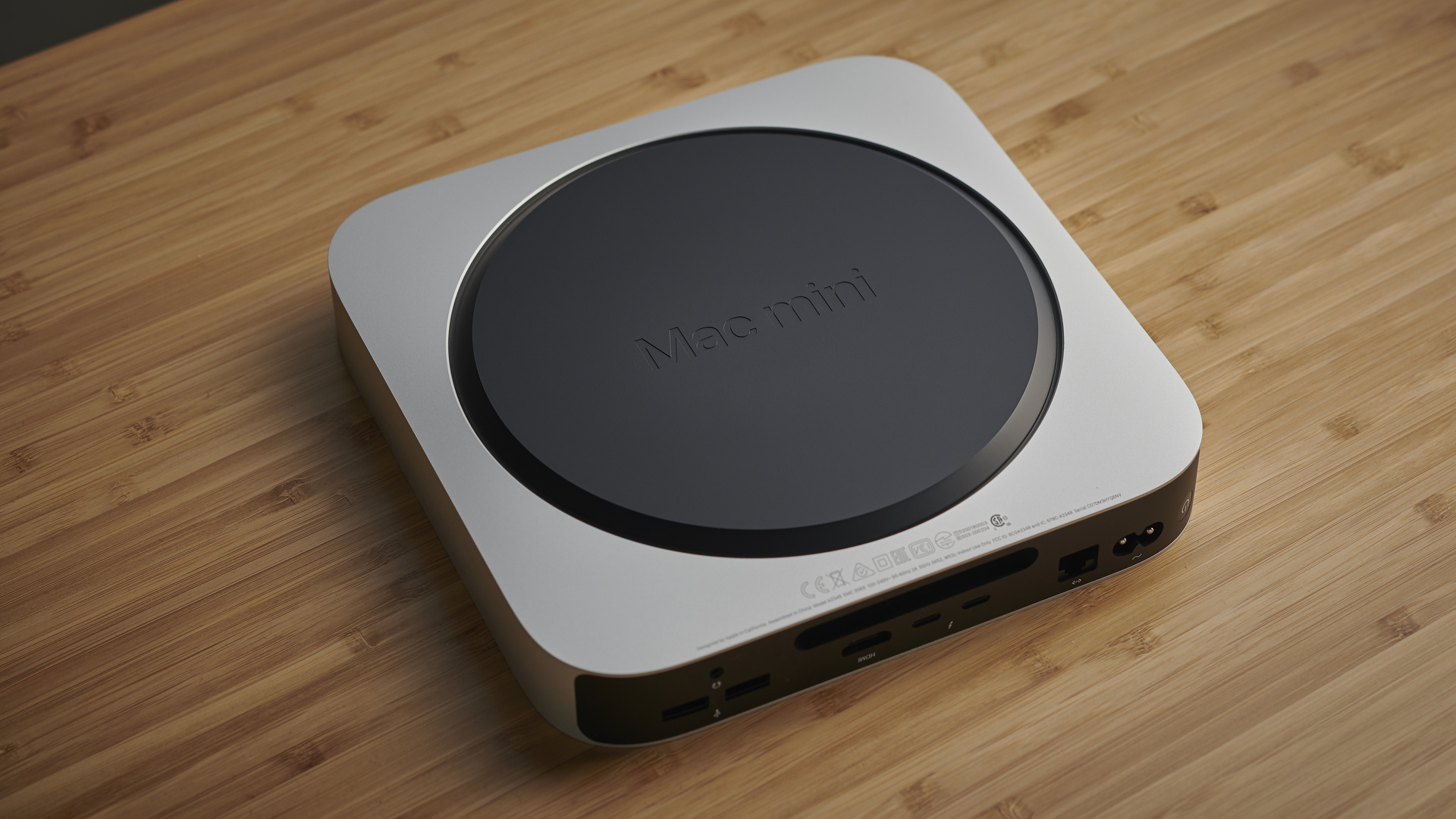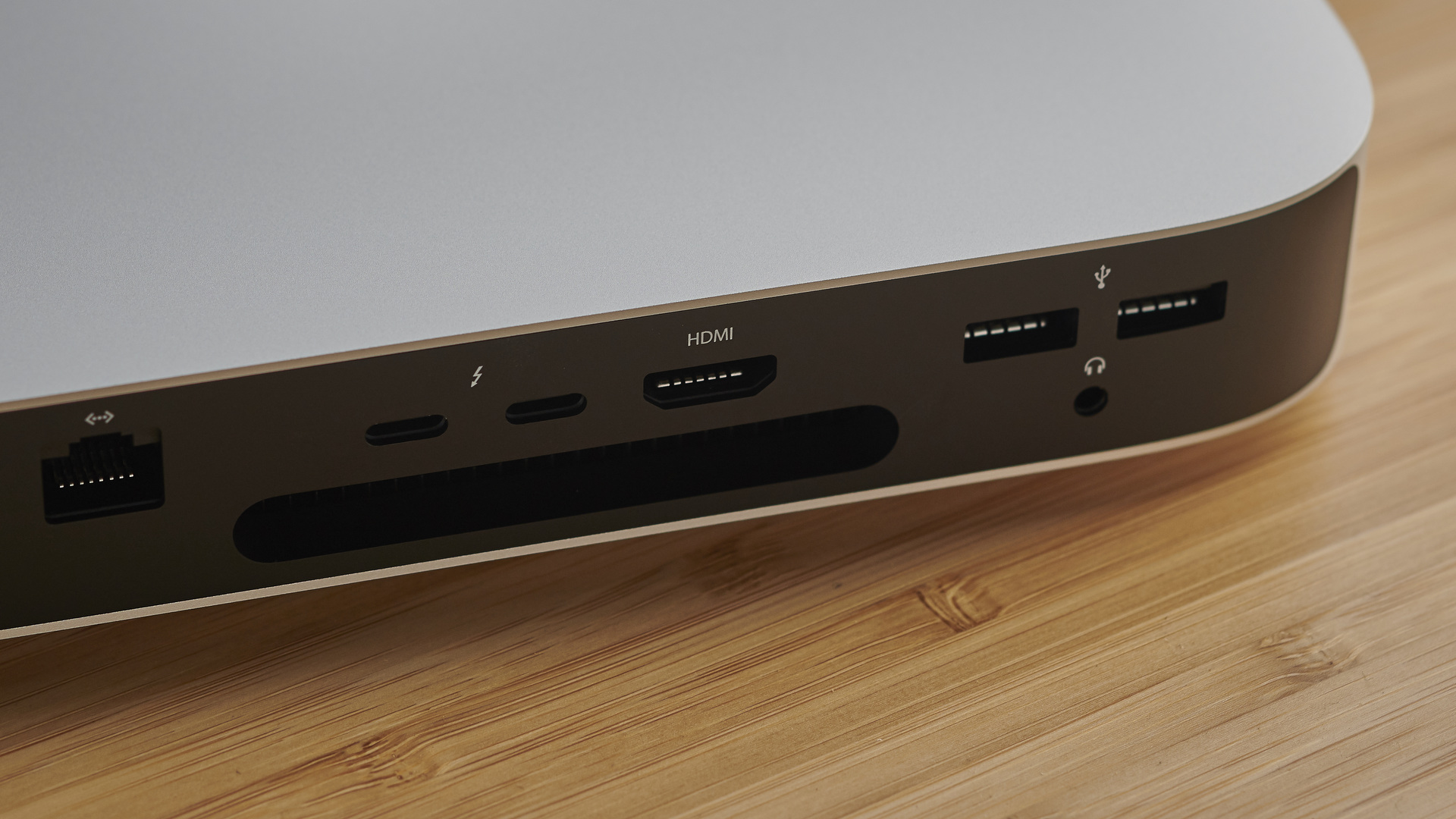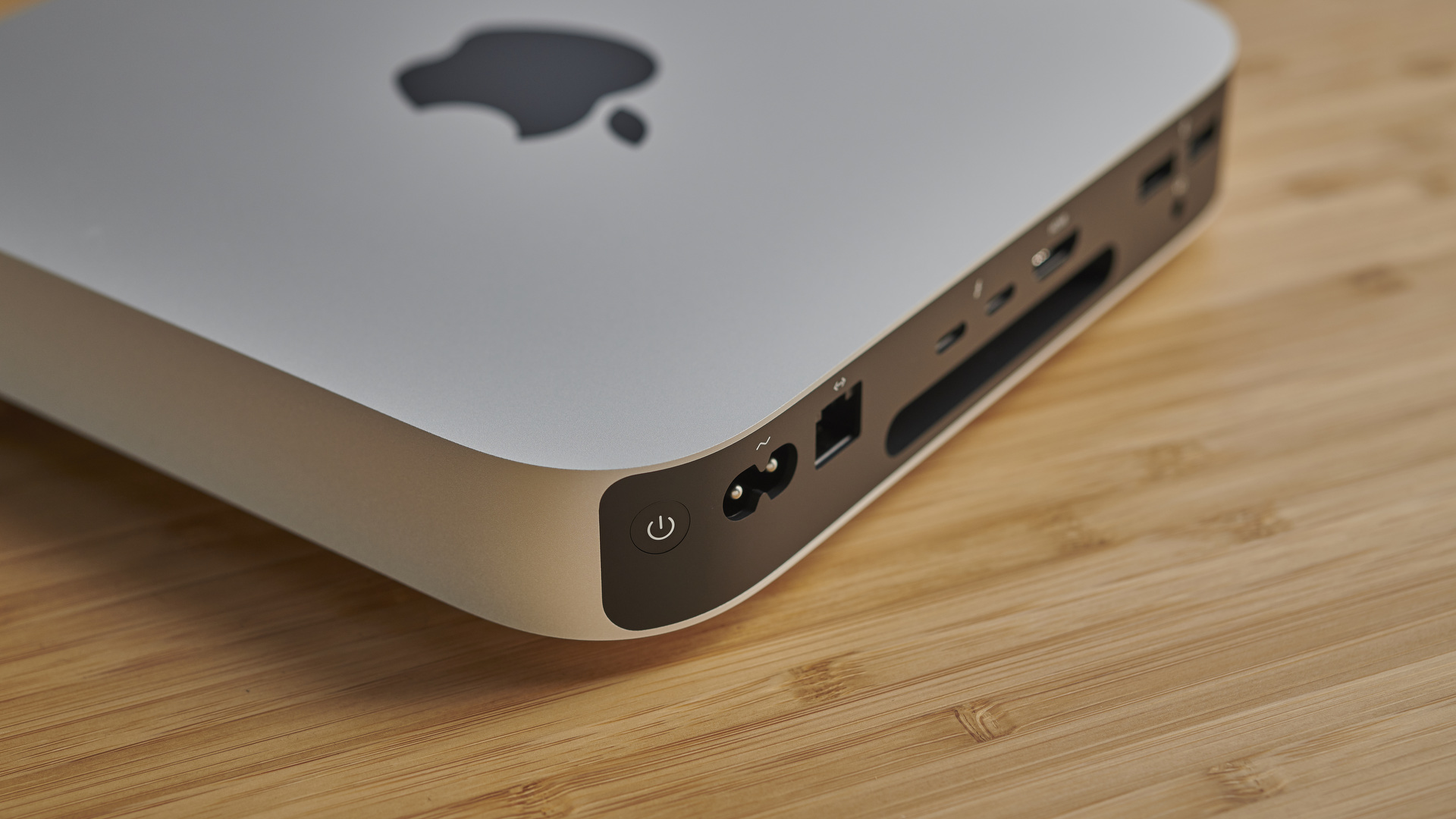Apple Mac mini (M1, 2020)
With the new Mac mini (M1, 2020), we finally see the smallest Mac get a much-needed update. And it arrives with some bold promises, with Apple claiming up to three times faster CPU performance than the previous Mac mini, and up to six times the graphical performance.
That’s all thanks to Apple’s new M1 system on a chip (SoC). Debuting in the new Mac mini, the new MacBook Air (M1, 2020), and the new MacBook Pro 13-inch (M1, 2020) laptops, the M1 allows the new Mac mini to compile Xcode up to three times faster, play intensive games, and render complex Final Cut Pro scenes much faster than the previous model, all while retaining its small and compact chassis.
The fact that the Mac mini (M1, 2020) is the first desktop Mac to get the M1 chip will please any fan of Apple’s small-form-factor computer. We include ourselves in that category, with previous models winning us over thanks to their compact designs and fantastic performance, which make the Mac mini one of the most versatile machines in Apple’s computing range.
It’s also Apple’s oddest device in some ways, and while that’s part of its appeal it also means it can sometimes feel a bit unloved by the company. Before the Mac mini (2018), the computer went without an update for four years, so it’s great to see Apple showcase the M1 chip, alongside its new macOS 11 Big Sur operating system, in the new Mac mini.
- Also check out our hands-on MacBook Pro 13-inch (M1, 2020)
- And our hands-on MacBook Air (M1, 2020) review

Price and availability
The new Mac mini (M1, 2020) is on sale now globally, and starts at $699 / £699 / AU$1,099 for the model with 8GB of RAM and 256GB of storage.
There's also a model with 8GB RAM and 512GB storage space for $899 / £899 / AU$1,399. Both of these have the same M1 chip with an 8-core CPU and 8-core GPU, which is the same chip as the one in the Apple MacBook Pro 13-inch (M1, 2020).
Both models can be further configured to offer up to 16GB of unified memory and up to 2TB of SSD storage.
The base model is also cheaper than the 2018 Mac mini, which started at $799 (£799, AU$1,249), so you’re getting drastically improved hardware for less money. It’s good to see Apple get competitive with pricing, as compact desktop PCs from competitors like Zotac and Intel often cost a lot more – although they are usually more customizable.

Design
Like the new MacBook Air and MacBook Pro 13-inch, the Mac mini (M1, 2020) keeps the same design as its predecessor.
With dimensions of 1.4 x 7.7 x 7.7 inches (3.6 x 19.7 x 19.7cm), the Mac mini (M1, 2020) is exactly the same size as the Mac mini (2018), though its weight of 2.6 pounds (1.2kg) is slightly lighter than the 2018 model, which weighed in at 2.9 pounds (1.3kg).
We've criticized Apple for not innovating with the design of the new MacBook Air (M1, 2020) and MacBook Pro 13-inch (M1, 2020), but in the case of the new Mac mini we feel a bit more relaxed about the fact that its design hasn’t changed significantly.
That’s for two reasons. First, the look and feel of the Mac mini isn’t as big a deal as it is with Apple's laptops. As a desktop PC, the Mac mini is designed to be placed unobtrusively on a desk or behind a monitor; and as long as a desktop PC works well, it shouldn’t matter too much what it looks like.
Laptops, on the other hand, are far more tactile devices. You’ll be carrying them around, and working on the actual devices themselves, so the look and feel is a lot more important – and, whether or not you think it's a good thing, many laptops have become status symbols.

The second reason is that, while the MacBook Air and MacBook Pro’s designs have been outclassed by competitors like Dell and HP, the Mac mini remains one of the nicest small-form-factor PCs ever made. We’re not sure that the MacBook designs fit the “if it isn’t broke, don’t fix it” ethos, but the Mac mini’s certainly does.
There is one slight design change, though, as the M1 Mac mini comes in a new color: Silver. This is lighter than the Space Gray color of the Intel model, and it’s a handy way of differentiating between the two, although if you prefer the Space Gray look (and to be honest, we do), it's not an option with the new Mac mini.
So, you’re still getting a great-looking compact desktop PC that will fit on any desk with ease. Port-wise you get Ethernet LAN, two Thunderbolt ports, HDMI, two USB and an audio jack for headphones. Thanks to the M1 chip, the Mac mini can now support up to two displays (one with up to 6K resolution at 60Hz connected via Thunderbolt, and one with up to 4K resolution at 60Hz connected via HDMI 2.0).
It’s worth pointing out that the Mac mini (M1, 2020) doesn’t come with a mouse or keyboard (nor a monitor), so you’ll need to buy these separately.

Performance
We’ll go into the performance of the Apple Mac mini (M1, 2020) in our full review, but our early impressions are positive, with macOS Big Sur running smoothly. We tested a few native and legacy apps (Apple’s Rosetta tool allows you to continue to run older apps without any major issues), and they ran well. You’d not notice that some of them are not running natively but via emulation.
The fact you can run older Mac apps on the Mac mini (M1, 2020) is very commendable, and with the M1 chip allowing iOS apps to be installed as well, it means the Mac mini continues to be a very versatile little PC.
The big selling point for the Mac mini (M1, 2020) is the inclusion of the Apple silicon M1 Soc, a new 8-core chipset that combines the CPU, I/O, security and more into one.
Apple is making some big claims here, promising that the M1 will offer the world's best CPU performance per Watt. The M1 Soc will feature an 8-core CPU consisting of four high-performance cores and four high-efficiency cores to balance workloads, and which is claimed will allow tasks to be processed nearly three times faster than on the previous Mac mini.
Gaming performance was also thrown around. If for some reason you chose to game on your previous Mac mini, then the M1-powered Mac mini will allegedly play graphically intensive games with up to four times higher frame rates.
Also, in good news for graphics designers and videographers, rendering in Final Cut Pro is also promised to be up to six times faster than on previous models. We’ll be testing these claims in our full review.
However, while performance does look to be good, there are reasons why you may want to go for the Intel Mac mini over the M1 version. Unlike with the MacBooks, Apple is still selling Intel-based version, and in some ways it could offer better performance than the M1 model.
First of all, while the Mac mini (M1, 2020) can be configured with up to 16GB of unified memory, the Intel version can pack up to 64GB of RAM. Not only is this a lot more, but it’s not unified. The Mac mini (M1, 2020)’s unified memory means that 8GB or 16GB of memory is shared between the CPU and GPU. This has benefits, as Apple argues that the “unified memory architecture gives the CPU, GPU, and Neural Engine access to the same pool of superfast memory,” so data stored in the memory can be transferred between the CPU and GPU without any of the traditional overhead.
However, this could also lead to some issues. First of all, it looks like the M1 chip may have a limit of 16GB, as none of the M1-toting Macs come with more memory than that. Unlike modular memory, it won’t be as easy for Apple to add more.
Also, if there’s a task that’s using up a lot of memory on the graphical side of things, that could have repercussions with CPU performance.
Another thing to note is that with previous models of the Mac mini, you could connect up an external graphics card (eGPU), to add extra graphical firepower to the tiny PC. This was a popular choice with video editors and 3D animators. However, with the Mac mini (M1, 2020), you cannot use eGPUs.
This will be a big blow to people depending on them, and means you’re stuck with the integrated graphics of the Mac mini (M1, 2020). If you invested in an existing eGPU, then you won’t be able to use it with the new model, and it makes the Mac mini (M1, 2020) a slightly less versatile machine than its predecessors. A shame.
Early verdict
The Mac mini (M1, 2020) is shaping up to be an impressive bit of kit, with Apple’s latest hardware and software taking center stage. It’s great to see Apple embrace its quirky little PC and use it as a showcase for its M1 hardware in a desktop PC.
In many ways it continues what we love so much about the Mac mini: it has a compact, attractive design, with some great components inside. The ability to run legacy Intel apps, along with M1 apps and iOS apps as well is genuinely exciting.
However, for people wanting a productivity machine, the fact that it no longer supports eGPUs could come as a blow. Sure, most Mac mini owners will never use one, but this is a PC that has developed a cult following amongst video editors and photographers, thanks to its scalability with eGPUs. With that feature now missing (and memory limited to 16GB), this model may not offer you everything you need.
Comments
Post a Comment